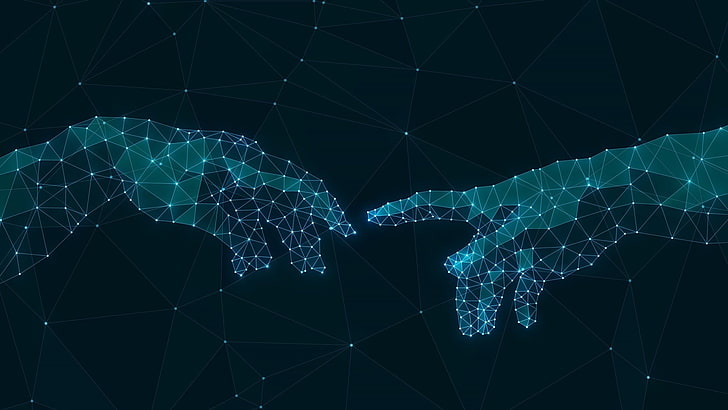In an age defined by constant connectivity and the pervasive glow of screens, our relationship with technology has reached a critical juncture. What began as a tool for convenience has, for many, morphed into a source of distraction, anxiety, and digital overload. We find ourselves trapped in endless scrolls, a constant barrage of notifications, and a nagging feeling that we’re always missing out. This collective digital fatigue has paved the way for a revolutionary movement: the rise of mindful tech. This isn’t just about using technology less; it’s about using it better. It’s a deliberate, intentional approach to our digital lives, aimed at fostering a healthier and more balanced relationship with the devices that shape our world.
This article will delve into the core principles of mindful technology, exploring how this philosophy is not merely a fleeting trend but a fundamental shift in how we design, interact with, and integrate technology into our daily lives. We will examine the practical strategies, the emerging tools, and the profound impact that this conscious approach can have on our mental well-being, productivity, and overall quality of life.
What is the Digital Dilemma?

Before we can embrace the solution, we must first understand the problem. The digital world is engineered to be addictive. Social media platforms, news feeds, and even productivity apps are meticulously designed with persuasive technologies to capture and hold our attention. Features like “infinite scroll,” push notifications, and “streaks” exploit psychological triggers to keep us engaged, often at the expense of our focus, sleep, and real-world connections. This constant state of “always on” leads to a phenomenon known as technostress, a state of mental and emotional strain caused by our relentless engagement with technology. It manifests as a lack of focus, increased anxiety, sleep disturbances, and a diminished ability to be present in the moment. The digital dilemma is not a personal failing; it’s an outcome of a system built to demand our perpetual attention.
The Three Pillars of Mindful Tech
The philosophy of mindful technology is built upon a foundation of three core principles. These are not just concepts but actionable guidelines that can reshape our digital habits.
A. Intentionality: The “Why” Behind the Click
Mindful tech begins with intentionality. It’s about consciously asking yourself why you are reaching for your device. Is it to check a message, look up a piece of information, or simply out of habit? By pausing to consider your purpose, you break the cycle of mindless scrolling and impulsive checking. This principle encourages us to use technology with a clear goal in mind, turning our interactions from reactive to proactive. For example, instead of opening a social media app and getting lost in the feed, you open it with the specific intention of sending a message to a friend or checking a specific event. This simple shift in mindset can dramatically reduce wasted time and mental clutter.
B. Awareness: Recognizing the Impact
The second pillar is awareness. This involves a non-judgmental observation of how your technology use affects your thoughts, emotions, and physical state. Do you feel more anxious after a session of social media? Does late-night screen time disrupt your sleep? Awareness is about tuning into these signals. This self-observation allows you to identify which digital habits are beneficial and which are detrimental. This isn’t about shaming yourself for bad habits but about gaining the insight needed to make healthier choices. It’s about being present with your technology, not lost within it.
C. Deliberate Action: Creating a Healthier Framework
The final pillar is about taking deliberate action based on your awareness and intentionality. This is where you implement changes to create a healthier digital environment. It could mean setting time limits for apps, turning off non-essential notifications, or establishing “tech-free” zones in your home. This is where the abstract ideas of mindfulness become tangible habits. Deliberate action transforms your awareness into a concrete plan for a more balanced life, giving you back control over your time and attention.
Practical Strategies for a Mindful Digital Life
Embracing mindful tech isn’t about dramatic, overnight changes. It’s about implementing small, sustainable habits that, over time, lead to a profound transformation.
Re-engineering Your Digital Environment
The design of your devices can either facilitate mindful use or perpetuate mindless habits. By making a few strategic adjustments, you can create a more supportive digital ecosystem.
- Taming the Notification Beast: Notifications are the primary culprits of distraction. They interrupt our focus and pull us back into our devices. Go through your phone’s settings and turn off all but the most essential notifications. For most people, this means keeping only calls and messages from close contacts. Everything else can wait.
- The Power of Monochromatic Screens: Studies have shown that the vibrant colors of app icons are a powerful stimulus for our brains, often triggering a dopamine response. By switching your phone to grayscale or monochromatic mode, you can make your device less visually appealing and, consequently, less addictive. This small change can have a surprisingly big impact on your desire to pick up your phone.
- Curating Your Feed: Your social media and news feeds are a reflection of what you’ve chosen to follow. Take a “digital spring cleaning” day to unfollow accounts that cause you stress, anxiety, or feelings of inadequacy. Replace them with accounts that are inspiring, educational, or genuinely bring you joy. Your feed should be a source of positivity, not a trigger for comparison.
Cultivating Mindful Habits
These are the daily rituals that reinforce your new, intentional relationship with technology.
- The “First and Last 30” Rule: Avoid checking your phone for the first 30 minutes after you wake up and the last 30 minutes before you go to sleep. This simple rule helps you start your day with a clear mind and end it without the blue light and mental stimulation that can disrupt sleep.
- The Single-Tasking Challenge: Multitasking is a myth. When you try to do two things at once, you simply do both of them poorly. While working on a task, turn off all non-essential applications and browser tabs. Focus on one thing at a time to improve your concentration and the quality of your work.
- Scheduled Digital Detoxes: Regularly scheduled periods of disconnection are essential. This could be a “no-screen Sunday,” a tech-free evening, or even just leaving your phone in another room while you have dinner. These periods allow you to fully reconnect with your surroundings, your loved ones, and yourself.
- Mindful Consumption: Before you open an app or click on a link, ask yourself, “Is this going to add value to my life, or is it just a distraction?” This practice trains you to be more selective about the content you consume, ensuring your time is spent on things that are meaningful and enriching.
Mindful Tech in Action

The tech industry, recognizing the growing demand for digital wellness, is now creating new tools and features specifically designed to support mindful use.
A. Digital Wellbeing Dashboards
Most modern smartphones now come with built-in digital wellbeing dashboards, like Apple’s Screen Time or Google’s Digital Wellbeing. These tools provide a clear breakdown of your usage—showing you how much time you spend on each app, how many times you pick up your phone, and how many notifications you receive. This data is the foundation of awareness, giving you the objective information you need to make informed changes. You can also use these dashboards to set daily app time limits and schedule periods of downtime.
B. Meditation and Mindfulness Apps
The very technology that can distract us is also being used to bring us back to the present moment. Apps like Headspace, Calm, and Insight Timer offer guided meditations, breathing exercises, and sleep stories. These tools leverage the power of your smartphone to help you de-stress, improve focus, and cultivate a sense of inner peace.
C. Mindful Tech Gadgets
A new wave of minimalist and mindful gadgets is entering the market. These devices, often with stripped-down functionality, are designed to perform a single, core task without the distracting features of a modern smartphone. Examples include “dumbphones” that only handle calls and texts, or dedicated E-Ink readers that allow you to read for hours without the eyestrain and notifications of a tablet.
D. AI and Personalized Digital Health
Looking to the future, AI will play an increasingly significant role in mindful tech. Future AI assistants won’t just answer questions; they will proactively help you manage your digital life. An AI could learn your habits and gently remind you to take a break after a long period of work, or suggest a short meditation based on your real-time stress levels. This could mark the transition from reactive mindfulness to a truly proactive digital wellness companion.
The Business of Mindful Tech
The shift towards mindful technology is also a seismic event for businesses. Companies that can successfully integrate mindful design principles into their products will gain a significant competitive advantage. This includes:
- Ethical Design: Moving away from persuasive, attention-grabbing designs and towards interfaces that prioritize user well-being.
- Transparency: Being transparent with users about how their data is used and what a product’s true purpose is.
- Empowering the User: Giving users more control and agency over their digital experience, rather than treating them as passive consumers of content.
This is a clear signal that the market is ready to reward companies that prioritize user health and happiness over endless engagement metrics. It’s a new frontier in tech, one that is built on trust and a genuine desire to improve people’s lives.
Conclusion
The rise of mindful tech is more than just a passing trend; it is a profound and necessary re-evaluation of our relationship with the digital world. It is a collective recognition that while technology offers incredible potential, its unchecked consumption can come at a significant cost to our mental health and well-being. This movement is not about a total rejection of technology, but rather an intentional, deliberate act of reclaiming control. It’s about transforming our devices from demanding masters into supportive servants.
By embracing the principles of intentionality, awareness, and deliberate action, we can each begin to build a healthier and more balanced digital life. The tools are already at our disposal, from the simple act of turning off a notification to the powerful insights offered by a digital wellbeing dashboard. The future will bring even more sophisticated tools, with AI and ethical design principles promising a new era of technology that is truly human-centered.
Ultimately, mindful technology is about finding harmony between our offline and online selves. It’s about ensuring that our digital lives enrich our human experience rather than detract from it. It’s a powerful reminder that we are in control, and with a conscious shift in our habits, we can harness the immense power of technology to improve our lives, foster deeper connections, and cultivate a sense of inner peace in an increasingly noisy world. The mindful tech revolution is a journey back to ourselves, one thoughtful click and intentional scroll at a time.













